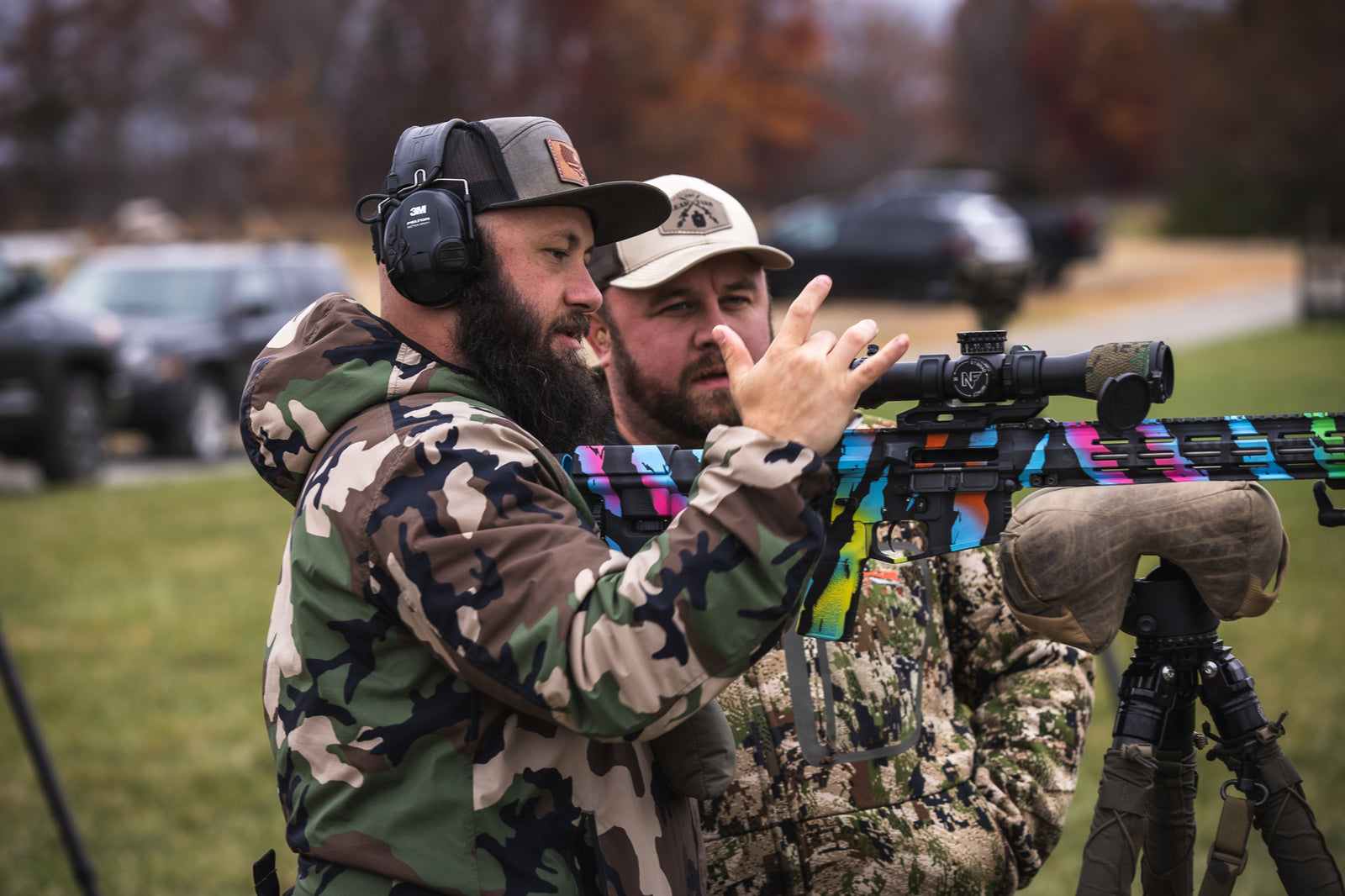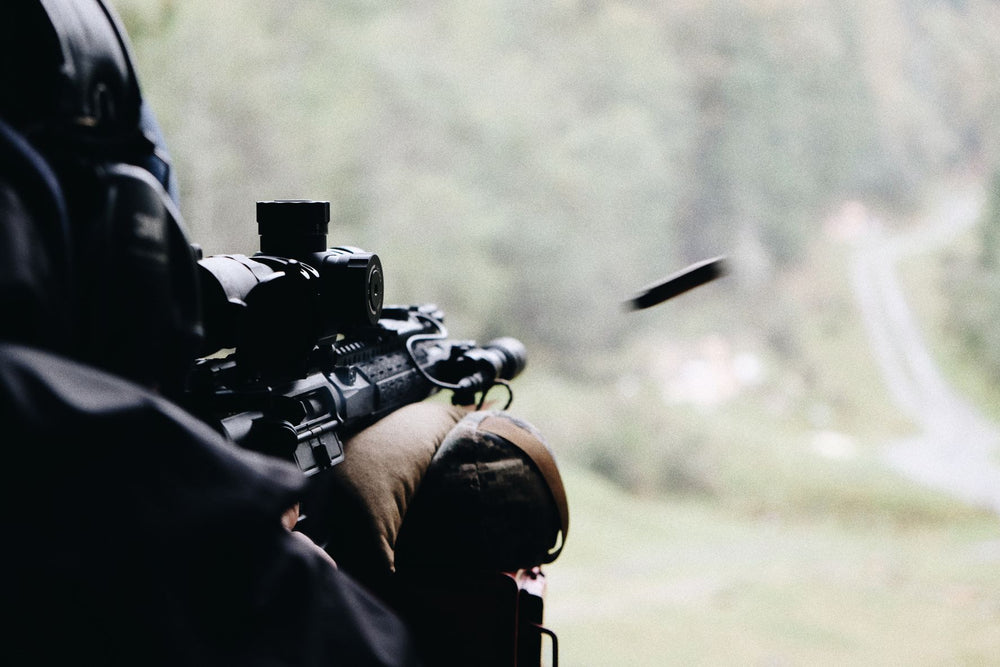Target Package in the Weapon Safety Rules?

Target Package in the Weapon Safety Rules?
“What can that possibly mean? This guy is cracked! What is a target package? Safety rules? I don’t need to go over those, I know those.” Hear me out, there are more to the safety rules than we have all been taught our entire lives. I first started coming across this when teaching 1 on 1 classes to students and searching for other ways to explain the rules to different people so that they could understand the rules deeper. I needed to find a way to make them sink in and keep Shooters intrigued so that their eyes didn’t glaze over upon the first mention of “Weapon Safety Rules.” I’ll do the same for you.

First off, the context in which we are going to work. A professional style target package and how you can use the weapon safety rules to determine/deduce the same information that’s needed for considering your target and how to engage it effectively.
Weapon Safety Rules (often different words are used, different explanations or in different orders. The core of the rules is typically the same no matter where seen.)
- Treat every weapon as if it were loaded.
- Never point your weapon at anything you do not intend to shoot.
- Keep your finger straight and off the trigger until ready to fire.
- Keep your weapon on safe until you intend to fire.
- Know your target, what lies beyond, in between and to the flanks.
Amid these various rules, there's a wealth of knowledge to uncover. Think of target packages as comprehensive guides that gather all the essential information in one place, helping you achieve your goals when dealing with a living being or a specific objective. While there are various ways to structure a target package, they all contain the same core details: who, what, when, where, why, and how.

The first safety rule, 'Treat every weapon as if it were loaded,' is closely tied to situational awareness and forming good habits. It encourages you to develop the habit of always being prepared, no matter the situation you're entering. In essence, it instills the mindset that every decision should always be treated with the utmost caution.
Never point your weapon at anything you do not intend to shoot is a rule I usually follow up with the question of “what is the most important word here?” Intent, or rather, the longer form “intention” is the foundation of this rule. Your intentions as the Shooter or Hunter are the ultimate goal. Do you intend to put meat on the table or win the competition? These goals require not just an amount of skill necessary to complete the task but dedication to the art of it. Dedication to achieving these goals at the highest level.
The other part of this is a reinforcement of the habits and mentality in the first rule. It is a double check of it all. In mission planning it is often stated that supervision is the most important step and the reason for that is a reinforcement of the commander’s intent. See? There it is again. Intent. If the actions being taken or planned do not ultimately support taking the target, then they aren’t necessary.
What could keeping your finger straight and off the trigger until ready to fire have anything to do with mission planning or properly taking down big game? Emphasizing patience as well as preparation, keeping your finger straight and off the trigger until ready displays an adherence to the basics and how their mastery is not just essential but always worked upon. Knowing details about your target can seem small and irrelevant, however when your life or others depends upon the knowledge you may have, it becomes essential. Deciding when or taking advantage of when it is the best time to fire is essential. This can translate into sight picture as well as prepping an ambush site.
Rule 4. Keep your weapon on safe until you’re ready to fire speaks straightforwardly about attention to detail and the adherence to strict guidelines. What is not often seen is that it also speaks about is that it emphasizes the critical role of attention to detail and strict adherence to guidelines in both firearms safety and military operations. This rule extends beyond its immediate context and resonates within military planning and reporting methodologies like OSMEAC, BAMCIS, and SALUTE.
In essence, "until ready to fire" underscores the importance of being fully prepared, both in firearm safety and military operations. It stresses the need for meticulous planning, situational awareness, and the ability to execute tasks precisely when the circumstances are most favorable. Just as a weapon should be ready when all conditions are met for a safe and successful shot, military actions should be executed when all elements align for mission success.
Let’s break down safety rule 5 into its separate parts. The first being “know your target.” I prompt my students with the question “what do you need to know about your target?” This question is usually followed either by questioning eyes that don’t want to be called on or answers such as “which one is yours, where your target is, so you don’t hit someone else’s target” and other like answers. To be frank, the answer is short. Everything. You want to know absolutely everything about your target. Where is it, who is it, what is it, is it armed, does it have plates, how big does its antlers have to be, what’s its habitat and habits, what does it eat, what’s the likely engagement distance, what type of round will I need for it, what will the weather in the area be like, what should I wear or what’s the vital zone of the target, is it steel and are my rounds going to penetrate, etc. Regardless of the type of target you’re shooting at, you need to know everything you possibly can about it. There’s no putting it mildly how much you should know about your target.

What lies beyond? It is more aptly put to say those who are taught the weapon safety rules are taught to think of this as “is there a back stop that will keep my round from going somewhere unintended.” This is just the beginning of the answer, however. After the first explanation, Shooters start to catch on to what I’m putting down. Answers start coming such as innocent people, equipment you don’t want damaged, is my round going to stop, skip, or penetrate farther, what would it be penetrating and other similar answers. There are two others that I tell them to think about as well. The first being what lies beyond as in the future. Are the actions you’re considering taking for the better or worse & are you capable of carrying them out to the best outcome? Admittedly, you don’t always have the time to assess every situation as thoroughly as this. Let us take into consideration what lies beyond while spotting shots. If a target is on a bit of a rise with no back stop, but the terrain rises behind it some distance away and gives the appearance of a backstop, the Shooter needs to be aware of this or else they may make false corrections while shooting. Because the actual impacts could be 40 – 60 yards or even several hundred yards behind the intended target. This can give a completely false read on the next shot call.
What lies in-between? To dispense with the obvious early, what lies in-between usually refers to making sure that nothing is between you and the target either disturbing your view or that could get shot. While this can deal with height over bore as well as short shooting, another way to look at it is “what does it take to get there?” Are you walking, driving, flying, hiking, or any other methods. Another consideration to make is that in between also references to the atmospherics which applies to your travel, as well as altering the behavior of the target and finally the external ballistics of your round in flight. Is there a mountain pass, or bad weather, what type of marshland or valley must be contended with.
Now, finally, to the flanks. To the flanks is what I often refer to as seeking cover and concealment, looking for other threats or, more likely, those who need medical aid. To the flanks is also another excellent way of talking about searching and assessing to keep your situational awareness at 100%. In the terms of planning or gathering all the necessary information needed for your target, having an idea of what or who may be around your target as a means of understanding which way they may go your you may need to go is important to the planning stage. For example, where is the nearest tree line your trophy buck may take refuge in if you hit or miss the shot.
Understandably, this can all seem like a bit of a stretch. Yet, it is my belief that there are many areas of life, safety rules included, that are often overlooked or not explored deep enough. Take the time and consider that we do not know what we do not know. This mentality is what keeps us learning and understanding more and more.
-John Carughi





Leave a comment